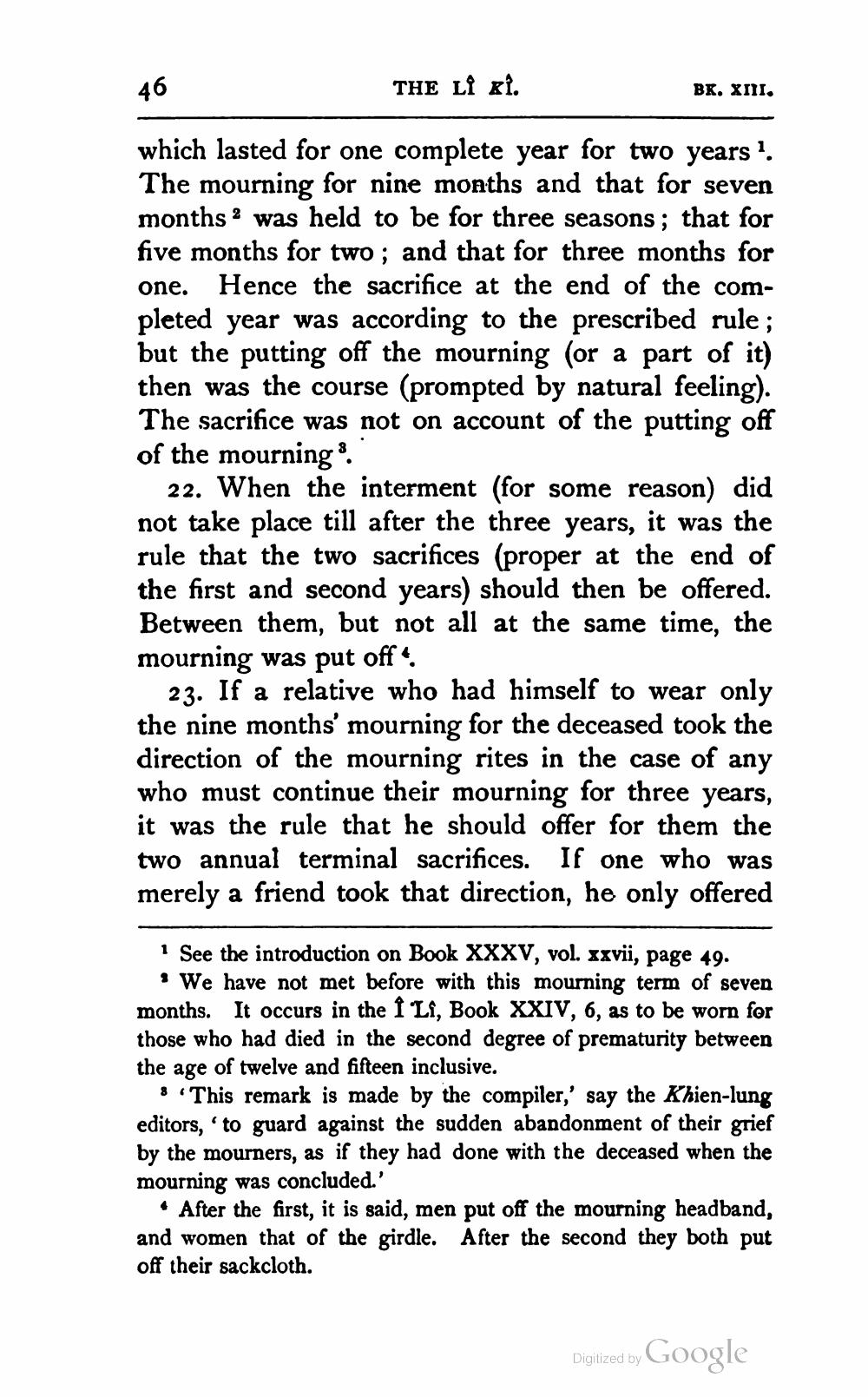________________
THE LI RI.
BK. XIII.
which lasted for one complete year for two years ?. The mourning for nine months and that for seven months 2 was held to be for three seasons; that for five months for two ; and that for three months for one. Hence the sacrifice at the end of the completed year was according to the prescribed rule ; but the putting off the mourning (or a part of it) then was the course (prompted by natural feeling). The sacrifice was not on account of the putting off of the mourning
22. When the interment (for some reason) did not take place till after the three years, it was the rule that the two sacrifices (proper at the end of the first and second years) should then be offered. Between them, but not all at the same time, the mourning was put off,
23. If a relative who had himself to wear only the nine months' mourning for the deceased took the direction of the mourning rites in the case of any who must continue their mourning for three years, it was the rule that he should offer for them the two annual terminal sacrifices. If one who was merely a friend took that direction, he only offered
1 See the introduction on Book XXXV, vol. xxvii, page 49.
• We have not met before with this mourning term of seven months. It occurs in the I Li, Book XXIV, 6, as to be worn for those who had died in the second degree of prematurity between the age of twelve and fifteen inclusive.
8 "This remark is made by the compiler,' say the Khien-lung editors, 'to guard against the sudden abandonment of their grief by the mourners, as if they had done with the deceased when the mourning was concluded.'
• After the first, it is said, men put off the mourning headband, and women that of the girdle. After the second they both put off their sackcloth.
Digitized by Google




